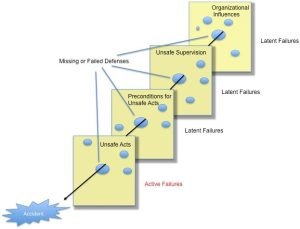The Charity
Aviation
Maritime
Lifting Operations

Initial Report
Outline:
A report describing a lifting operation which highlights several areas where there is a high potential for an accident to occur.
What the Reporter told us:
Recently, I observed lifting operations being performed on a research vessel and on the basis of a single observation, the operation fell short of the minimum expectations under SI 2006 No.2184. The Merchant Shipping and Fishing Vessels (Lifting Operations and Lifting Equipment) regulations 2006. The deficiencies identified could lead to serious harm to the vessel’s crew, third parties and/or pedestrians.
Specifically, four oil drums were lifted unsecured on a wooden pallet using web strops. During the lifting operation the wooden pallet, which had not been designed for this purpose, began to break up. The area had not been cordoned off and the load passed over the single gangway access to the vessel which was not secure.
On the basis of these observations we contacted the vessel operator.
Lessons Learned:
The vessel operator reacted in a positive way, performing an investigation that identified failings against their SMS. They have since procured additional equipment which, if used correctly, should ensure that similar operations are performed safely in future.
The purpose of issuing this report is that it is the experience of the reporter that lifting of goods on wooden pallets using web strops that have not been designed for this purpose is not unique to this lift. As an ex-mariner and having seen loads fail in similar situations, I find this deeply concerning.
CHIRP Comment:
Having discussed this report, the Maritime Advisory Board commented that the reporter raises several important issues and agreed entirely with the concerns, which deserve analysis and promulgation.
In terms of Near Miss reports, the lifting incidents received by CHIRP and other organisations such as the International Marine Contractors Association (IMCA) and the Marine Safety Forum (MSF), are almost entirely associated with routine lifting operations. It is rare that problems have been associated with a lifting plan itself, but rather with how it has been executed. It is also rare to receive a report concerning heavy lifts or complex operations – “routine” is the key word here.
Reading the report, you are led through a series of failures of the Swiss Cheese model (see diagram below) where each defence which has been breached, no matter how minor, could lead to an injury or worse. The more defences that are breached – the more holes in the Swiss Cheese and the greater the likelihood of all of the holes lining up leading to the increased probability of an incident.
Looking more closely at the report to identify the failings, the first part states that oil drums were lifted unsecured on a wooden pallet using web strops. That is three defences breached in less than a dozen words. During the lifting operation the wooden pallet, which had not been designed for this purpose, began to break up. The area had not been barriered off and the load passed over the single gangway access to the vessel which was not secure.

Swiss Cheese model showing breaches of defences with potential for an incident
A considered risk assessment treating each lift as an independent operation (i.e. not a generic risk assessment) and backed up by an on-site toolbox talk prior to commencement of an operation, should be able to eliminate poor seamanship practices, incorrect lifting techniques and incorrect apparatus used for lifting. Training should also be taken into account. It is equally important that the location of the lifting is considered. In this case the load passed over a gangway and the consequences of anybody boarding as the load fails do not bear thinking about – simply due to the area not being cordoned off.
This is a clear example of one area where, if companies looked into their procedures sufficiently, it would uncover the complete panoply of missing elements of a safety culture, including procedures, training, lack of workforce empowerment, communications, incompatible goals, etc. In this particular case the company in question solved a particular problem but could have learnt so much more.
The Code of Safe Working Practices devotes all of Chapter 19 to lifting operations and lifting plant. This includes correct signalling, and information on regulatory requirements supplemented by Marine Guidance Notes. An extract succinctly sums up this report;
19.11 Lifting operations.
19.11.1 Every lifting operation must be:
- subject to risk assessment;
- properly planned;
- appropriately supervised; and
- carried out in a safe manner.
In short, ask whether a risk assessment and toolbox talk have been conducted prior to commencement – if not, stop the job until they have been carried out.
Useful reading:
The International Marine Contractors Association (IMCA) has several safety flashes relating to lifting operations these may be found HERE (www.imca-int.com/alert/alerts/safety-flash/) and are replicated in the CHIRP reference library. IMCA also publish useful offshore lifting guidelines. The Marine Safety Forum also publishes Safety Alerts on the subject.
Report Ends………………







